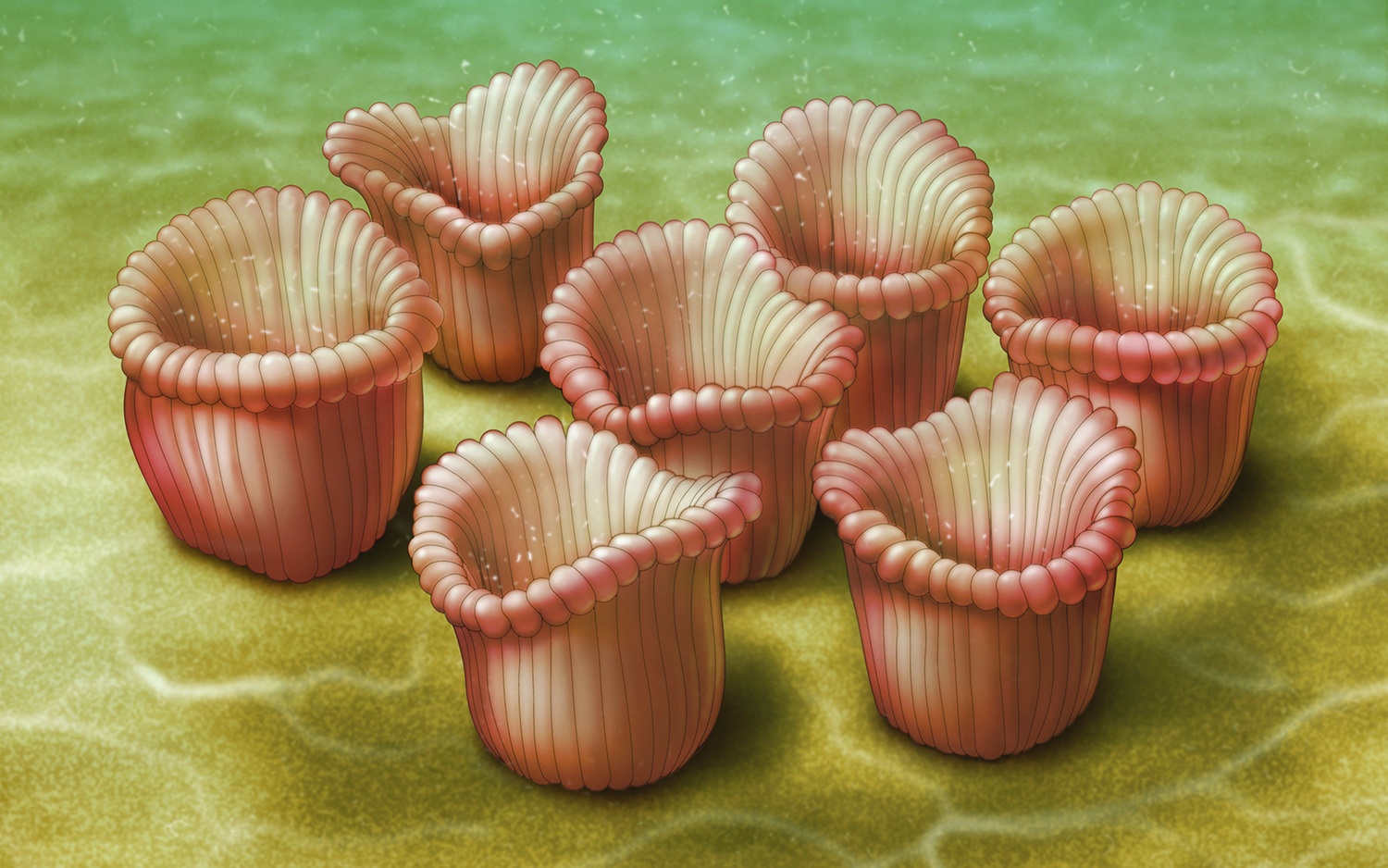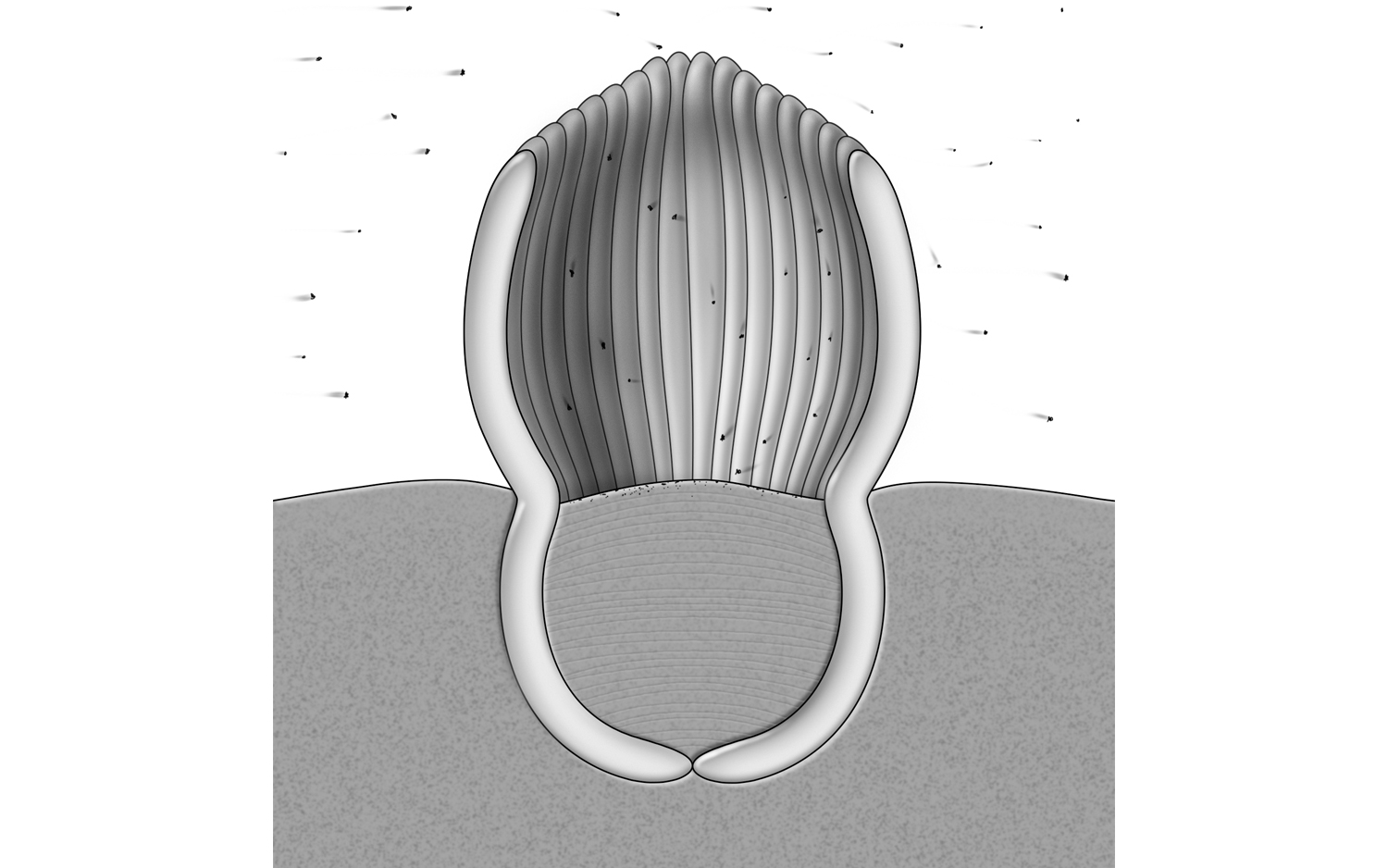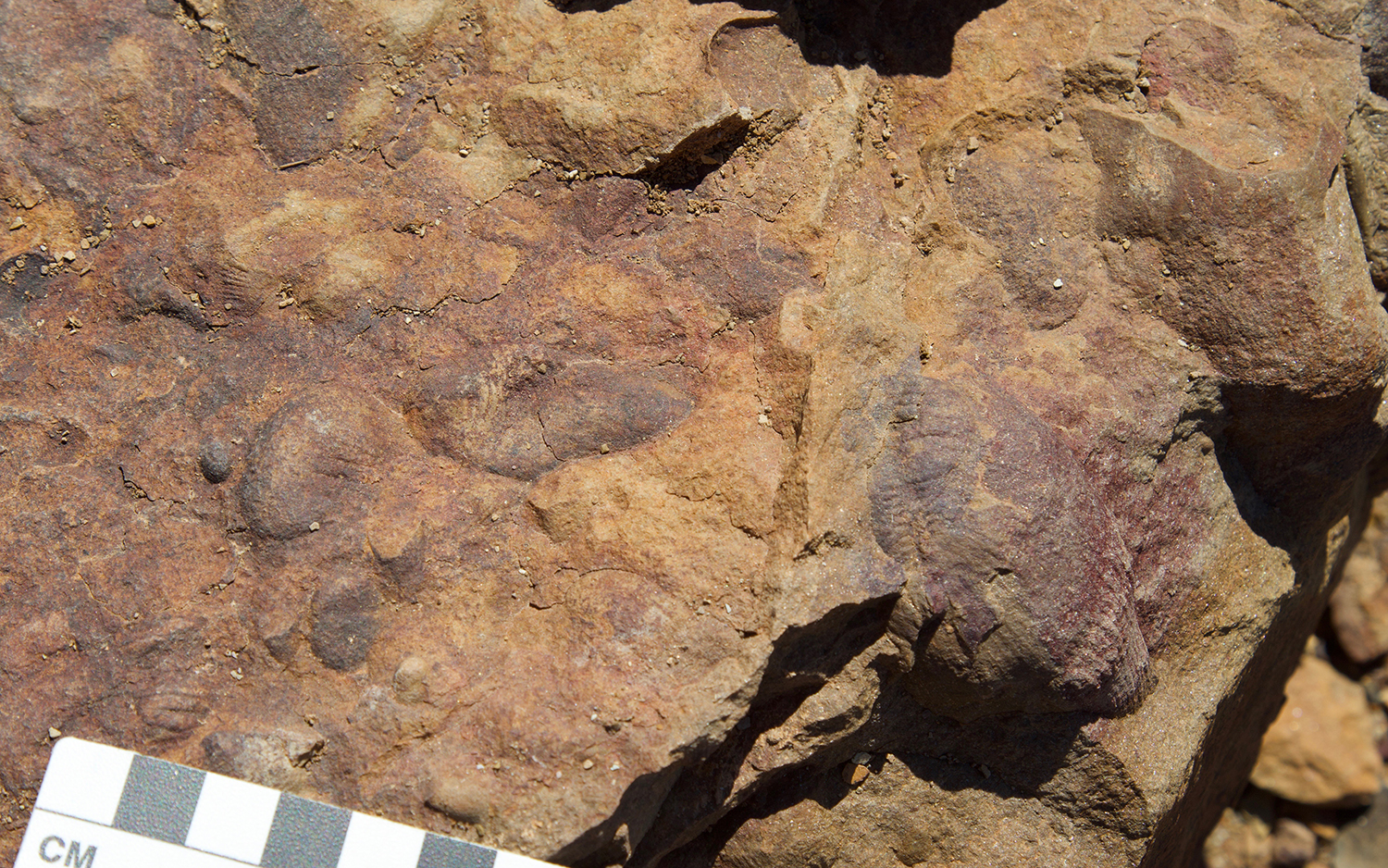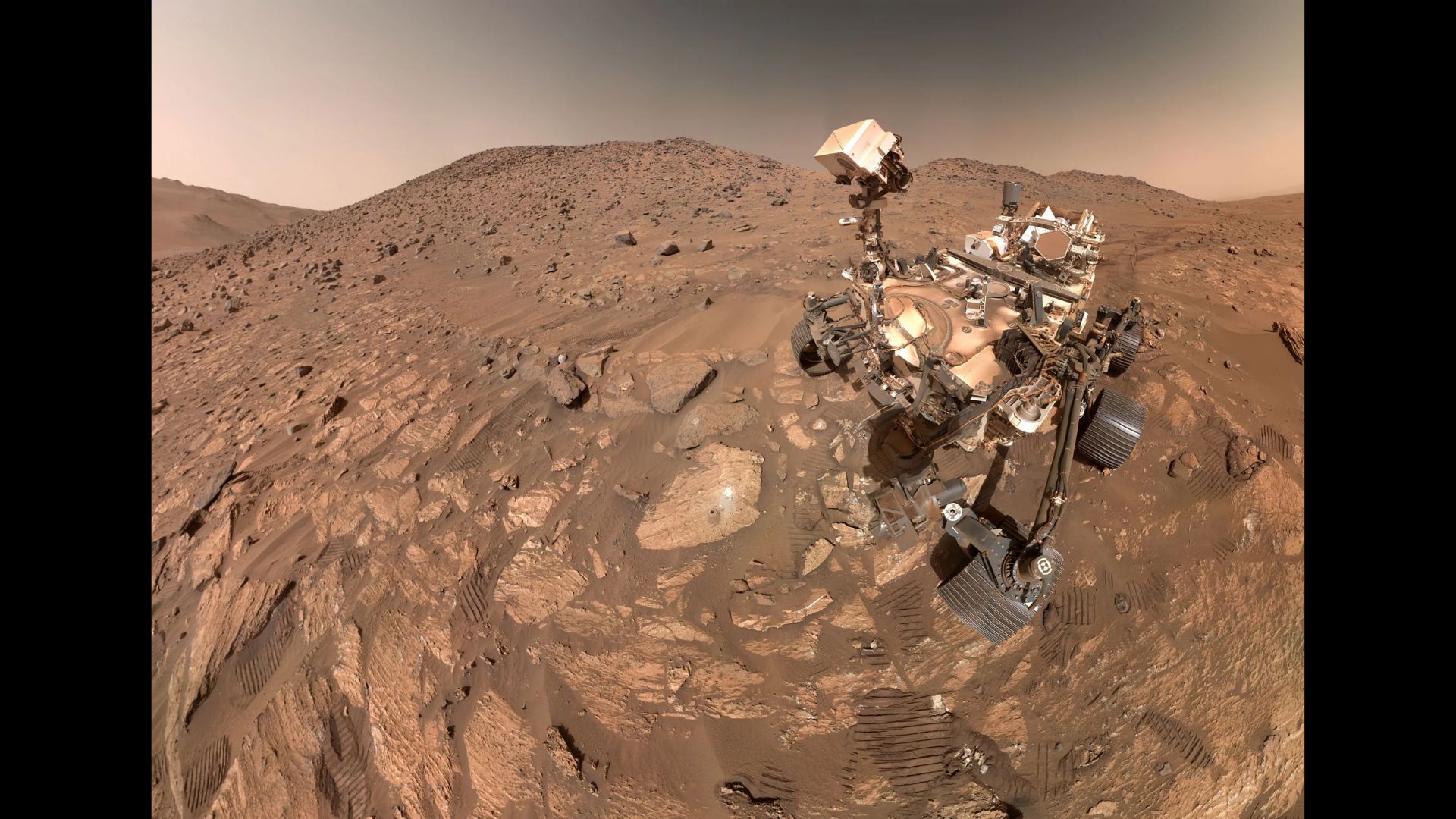Sack-Like Creatures Held Seafloor 'Dinner Parties' Half a Billion Years Ago

More than 540 million years ago, primitive organisms that looked like frilled tulip blooms shared communal meals at underwater "dinner parties," according to fossils found in Namibia.
Clusters of these fossils in several locations showed that ancient creatures known as Ernietta gathered together on the ocean floor during the Ediacaran period (635 million to 541 million years ago).
Recently, scientists investigated why these organisms, among the earliest forms of life on Earth, may have assembled in groups, discovering that it had to do with how the soft, cup-shaped Ernietta fed. [Images: Bizarre, Primordial Sea Creatures Dominated the Ediacaran Era]
The scientists surmised from these fossils that Ernietta individuals buried the lower part of their baggy bodies in the silty sea bottom, leaving an upper frill exposed to flowing water.
For the study, the researchers created digital 3D models of these partly buried Ernietta, then subjected the models to variable water flows. In doing so, the researchers hoped to pinpoint Ernietta feeding techniques and explain the ancient sea creatures' preference for group living, according to the study.
First, the scientists directed water around individuals. The researchers observed that Ernietta directed flowing water into a central body cavity, which is likely where nutrients were absorbed, said lead study author Brandt Gibson, a geobiologist and doctoral candidate at Vanderbilt University in Nashville, Tennessee.
Though it's unclear how Ernietta captured food particles, "we can expect that there were anatomical forces inside the body cavity that were likely grabbing the nutrients out of the water," Gibson told Live Science.
Get the world’s most fascinating discoveries delivered straight to your inbox.
The next step for the scientists was to see what happened when water flowed around a cluster of Ernietta.
"We started stacking them in different arrangements and changed the spacing between them to see how that affected fluid flow patterns," Gibson explained.
The researchers found that as water flowed around many Ernietta bodies, it became more turbulent, redistributing nutrients so that food reached individuals that were downstream. At the same time, the churning water helped to disperse waste created by the Ernietta living upstream and carry it out of their living quarters, the researchers reported.
This is the oldest known example in the fossil record of commensalism, a phenomenon in which one organism benefits harmlessly from another, Gibson said.
Like most of the simple, soft-bodied organisms that emerged during the Ediacaran, Ernietta aren't thought to be animals. Nevertheless, their communal feeding style resembles that of some animals alive today, said study co-author Simon Darroch, an assistant professor with the Department of Earth and Environmental Sciences at Vanderbilt University.
"In terms of closest analogs, we can say from our study that they're behaving like mussels or oysters — living gregariously in a way that helps them collectively feed," Darroch told Live Science in an email.
However, while mussels or oysters actively pump the water during feeding, Ernietta probably were passive feeders that relied on the motion of water currents to deliver their food and carry waste away, Gibson added.
Modern sea creatures resemble Ernietta, though, in that they live and feed together because that behavior benefits the entire group, Darroch said.
"If you're a stationary suspension feeder, then living together and interfering with normal flow patterns can be a great thing," he said.
The findings were published online today (June 19) in the journal Science Advances.
- These Bizarre Sea Monsters Once Ruled the Ocean
- Photos: 508-Million-Year-Old Bristly Worm Looked Like a Kitchen Brush
- Photos: Ancient Shrimp-Like Critter Was Tiny But Fierce
Originally published on Live Science.

Mindy Weisberger is a science journalist and author of "Rise of the Zombie Bugs: The Surprising Science of Parasitic Mind-Control" (Hopkins Press). She formerly edited for Scholastic and was a channel editor and senior writer for Live Science. She has reported on general science, covering climate change, paleontology, biology and space. Mindy studied film at Columbia University; prior to LS, she produced, wrote and directed media for the American Museum of Natural History in NYC. Her videos about dinosaurs, astrophysics, biodiversity and evolution appear in museums and science centers worldwide, earning awards such as the CINE Golden Eagle and the Communicator Award of Excellence. Her writing has also appeared in Scientific American, The Washington Post, How It Works Magazine and CNN.




